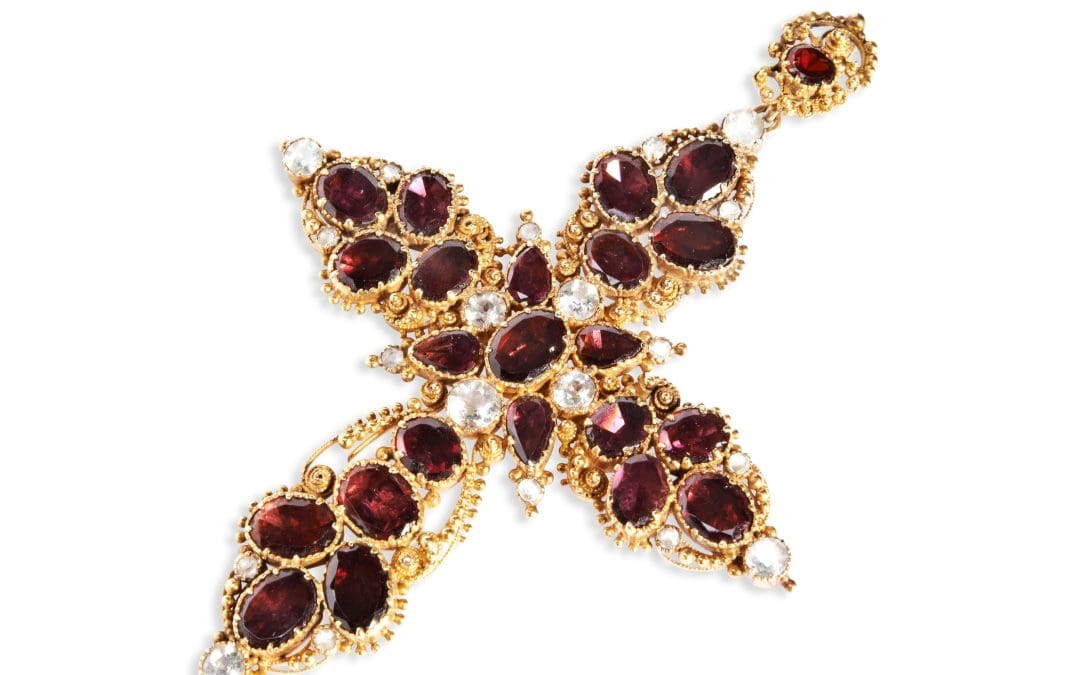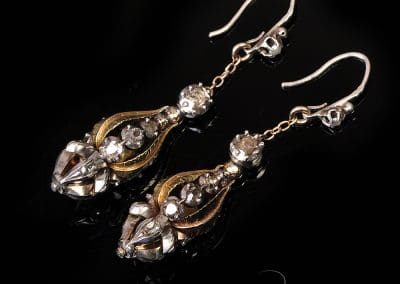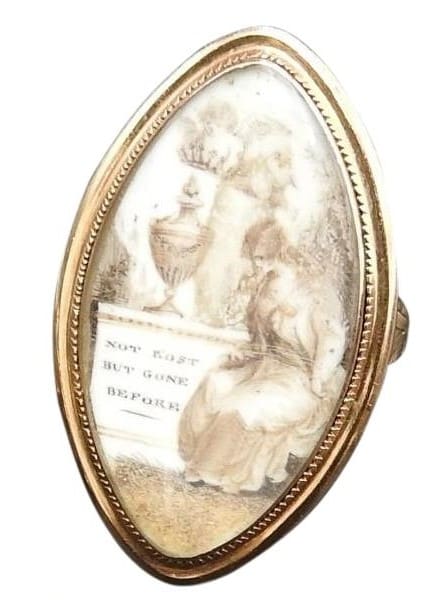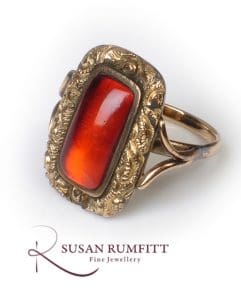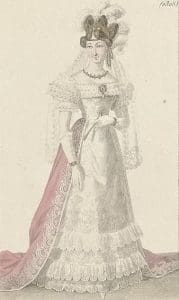The 18th Century
As the century turned neoclassicism was at its height. Napoleon became an emperor, while the Prince of Wales married but continued to philander and run up huge debts. Both sides of the channel were a riot of pomp and splendour with glittering jewellery in abundance.
Diamonds à Jour
Until the turn of the century gemstones were set in closed back settings and often foiled allowing jewellers to match and modify colours with foil but reducing their fire and brilliancy. Now diamonds were beginning to be set with open backs allowing light through and their true brilliancy to shine. Later coloured gems were also set in open backs, but the tradition of foiling continued well into the Victorian period for cheaper gems and paste.
Day and Night Jewellery
Whilst diamonds and fine gems were required for the parures of grand occasions it became more conventional to wear less showy jewellery in other, less formal situations. Garnets, amethysts, topaz, aquamarines, opals, coral, carnelians, jaspers and agates were all popular, as was cut steel; a form of faceted steel was used to imitate diamonds in cheaper jewellery. Much of the Georgian jewellery on the market today is of this less formal type as the more expensive pieces were dismantled for the gems when the style fell out of favour. One exception is riviere necklaces; a string of glittering graduated, collet set gems connected as discreetly as possible. Simple and beautiful they were made throughout the 18th and 19th centuries and remains as enduringly popular and wearable today.
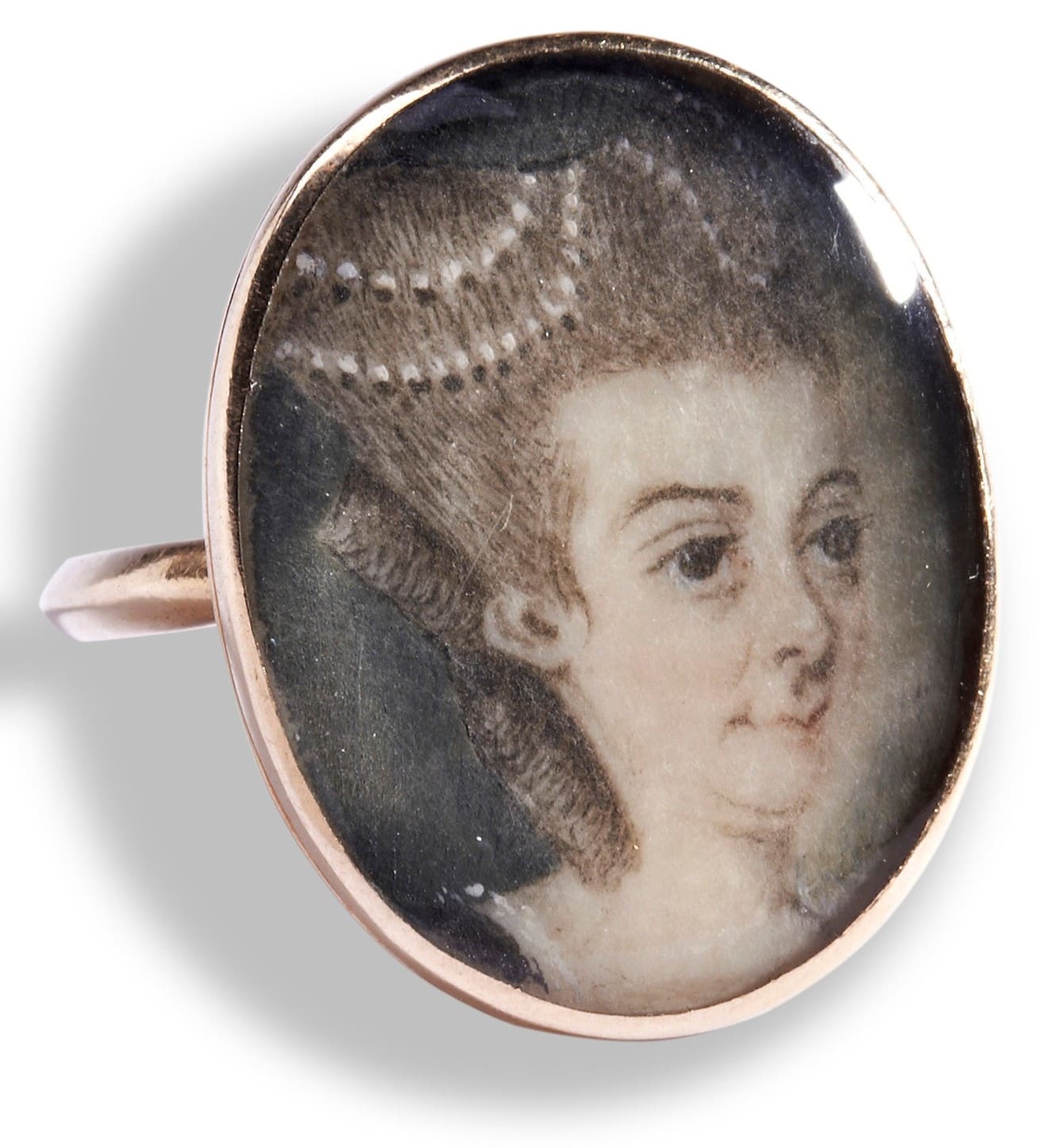
Romanticism
It was also in the less formal jewellery that the softer side of Georgian jewellery can be seen. Sentimental jewellery had been popular through the second half of the 18th century with neoclassical mourning jewellery full of ancient symbolism. The Prince of Wales had always liked to give romantic keepsakes to his mistresses, in particular miniatures, but by the time he became Prince Regent a generally more romantic tone arose. Bows and arrows, hearts, snakes, harps, butterflies, cupid, padlocks, birds, and flowers were all employed to demonstrate affection. Messages of love were also spelt out in flowers where symbolic meaning was attached to certain flowers, and with gemstone as they were used to spell out messages or names.
With the restoration of Bourbon Kings and the Prince of Wales as Regent, the English once again travelled through Europe collecting souvenirs to return with them. Shell and lava cameos, micro mosaic, pietra dura, and painted enamel plaques were all popular keepsakes. Whilst jewellery was still being worn in abundance the cost of the wars had taken its toll, and jewellers looked for ways to keep cost low. Cannetille, a form of elaborate filigree work often in floral designs, used less metal and lent itself to the more naturalistic feel that fashion was taking. Chasing was another popular metal decoration with a similarly delicate appearance that complemented the less austere look. Precious stones were also at a premium but more affordable topaz, chrysoberyl, amethysts, and aquamarines from Brazil, set foil backed to regulate colours, were available and used to great effect both in cannetille and as rivieres. Garnets were also foil backed to a bright pink or red and set in necklaces or parures of flowerhead clusters or garlands.
By the last decade of the Georgian period the waistline had dropped back to a natural position and necklines were similarly low leaving lots of space for necklaces. Chains were used in abundance, especially long chains worn from shoulder to shoulder, pinned asymmetrically across the body, or in festoons. Puffed ‘leg-of-mutton’ sleeves encouraged multiple bracelets, often wide with cameos or enamel plaques. Enamel generally gained favour with painted enamels and champleve from the continent as well as the relatively new technique of guilloche enamel.
Whilst naturalistic designs flourished, jewellery production increasingly followed technological innovation. Aided by mechanical presses gold was shaped into thin but opulent looking jewellery, set with large gemstones the effect was impressive. By the very end of the Georgian period the skilled and time consuming cannetille work was being replaced by big bold gold machine made repousse jewellery. However, the sentiment and symbolism of the period do not diminish and, in combination with an enthusiasm for history and nature, formed the basis of the Romantic period to come.
